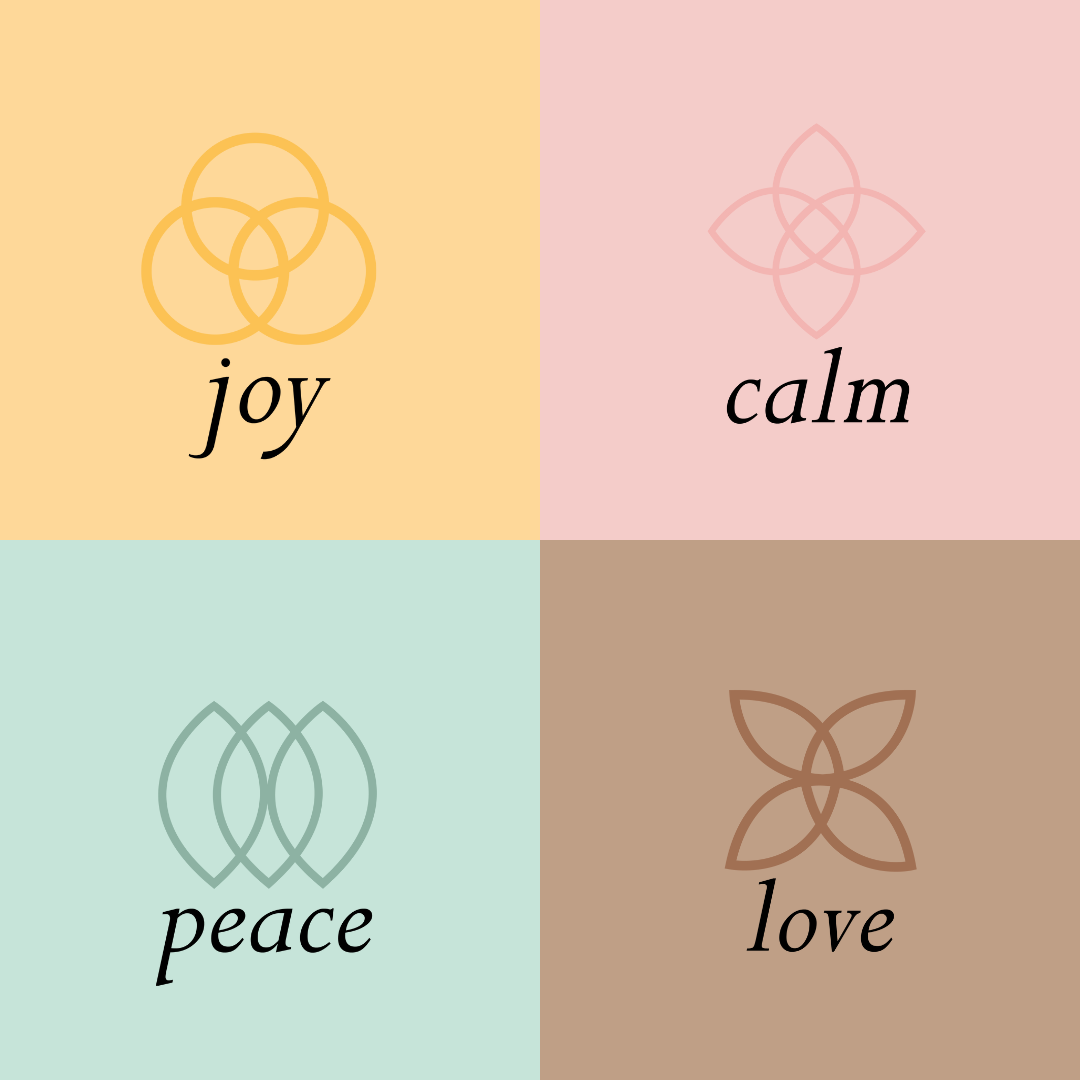How to hack your vagus nerve to bring you more Joy, Calm, Peace and Love
At Kalmar, our mission is all about trying to help you feel the best you can in any given moment. We want to empower you to connect with feelings of Joy, Calm, Peace and Love by giving you permission to reconnect to yourself and enjoy a few moments of selfcare throughout your day. With this week being Mental Health Awareness week, we wanted to talk about the Vagus Nerve, what it is, why it is so relevant in today’s environment, how the Vagus Nerve is connected to what we do at Kalmar and how to activate your Vagus Nerve to bring you more moments of joy, calm, peace and love into your day.
Firstly, what is your Autonomic Nervous System?
If you ever feel a tightness in your chest or your heartbeat increasing whenever you receive an email from someone you don’t like or read a negative news story, it’s because your brain detects a threat and triggers the fight-or-flight response. This is your sympathetic nervous system.
On the other hand, your parasympathetic nervous system helps to switch on your rest and digest response and enables your body to relax. For example, in the case of our ancestors, if you successfully ran away from a tiger and returned to your warm, safe and risk-free cave, this would send a signal to the brain that the threat has been removed and you can return to a state of peace and harmony.
However, with the way our society has evolved, these days often the ‘off’ button does not get pressed - especially this year with the pandemic – and therefore our mind and bodies experience these continuous low (or high) level chronic stress. These underlying chronic stressors can have serious health consequences on our minds and bodies unless we intervene by activating our nervous system.
What is your Vagus Nerve?
The vagus nerve is a major nerve in the parasympathetic nervous system. It is one of the longest and most important nerves in the body originating in the brain and extending down through the neck to the gut.
Research has shown that it can affect everything from your mood and stress levels to your digestion, heart rate and immune response.
What is the Polyvagal theory?
Stephen Porges (a professor of psychiatry) hypothesizes in his “polyvagal theory” that the parasympathetic nervous system is governed by two major networks: the dorsal vagal nerve network and the ventral vagal nerve network.
What is the dorsal vagal nerve?
When you are unable to resolve a threat through fight-or-flight (i.e. in the case of the pandemic or constant emails pinging or other stressful chronic events, you are unable to run away or physically fight it) your body may decide therefore that it is ‘safer’ to physically and mentally ‘switch off’. This is the dorsal vagal nerve network kicking into play and is called dissociation. When you are in a dissociated state, you can feel like everything is too overwhelming, feel hopeless or even depressed. This is why after you hear some negative news or receive an unwanted email from a boss or client, all you might feel like doing is giving up, lying in front of the tv feel slightly numb. Although there is nothing wrong with choosing to relax in front of the tv if this makes you feel happy or calm.
What is the ventral vagal nerve?
Conversely, the ventral vagal nerve network, is stimulated when you deeply connect with another person (or with yourself, by acknowledging and reacting to your body’s signs of stress), which in turn causes a sense of calm. So, it is the ventral vagal nerve you want to activate whenever you are feeling stressed.
How does the ventral vagal nerve function?
The ventral vagal network, also known as the social engagement system, extends up from around the diaphragm to the brain stem, crossing over nerves in the lungs, neck, throat, and eyes. Rituals using parts of the body — including deep breaths, gargling, gagging, humming, or social engagement like smiling or making eye contact with someone — send signals to the brain to say that it is safe to relax.
Stimulation of the ventral vagal network can also activate the prefrontal cortex, the area of the brain that supports logical thinking. So, activating the ventral vagal network can help you to think more clearly, creating a ripple effect to further reduce stress in the mind and body.
So how do you stimulate the ventral vagal nerve (i.e. the vagus nerve) and trigger a sense of calm and peace?
Below are some (of many) ways to come out of your fight or flight state, reconnect to yourself and activate your vagus nerve to help you feel more Joy, Calm, Peace and Love:
- Connect to your breath: If you are either in fight-or-flight mode (sympathetic nervous system) or feeling lethargic and unmotivated (dorsal nerves in parasympathetic mode), simply taking a moment to concentrate on your breath can be a powerful tool to self-regulate. The vagus nerve passes directly through the vocal cords, therefore taking some deep breaths can help stimulate the ventral vagal system. Studies show that slow, conscious, deep breathing from the diaphragm reduces cortisol levels (the stress hormone). You could try applying the Peace Balm of Serenity to your pulse points and take a deep inhale into your belly and lungs. Then exhale slowly. Aim to take about 4-6 breaths per minute. Breathing out longer than your breath in stimulates the ventral vagal network and trigger the rest and digest response.
- Tune into how your body feels: If you do not pay attention to the signals your body sends you when you are stressed, it is difficult for your brain to know when you need to send messages to your nervous system to relax. Take note of how you feel when you are calm and feeling at peace (stretch, touch your toes, go for a walk). Then notice the difference when you are stressed (notice any aches and pains, tight shoulders, headache etc). Becoming aware of these physical manifestations of stress in the body means you can mindfully and compassionately take a moment to relax and let go of them. Try rubbing the I Am Loved Cream into tense shoulders to release any unnecessary tension you may be holding on to.
- Connect to the present moment: One way to do that is by using your five senses. Go outside, listen to the birds, smell a flower. Create a mindful ritual with your Kalmar products: observe the colours, feel the textures, smell the scents. These are all simple “grounding” rituals which bring your body back to the present moment, which help your nervous system to feel safe rather than worrying about hypothetical future scenarios.
- Let go of negative thoughts and find gratitude: The narrative you tell yourself and the way you speak about your stressors can impact how your body responds. Rather than thinking about all the bad things happening in the world, make a list of everything you are grateful for. If you want to raise your energy, think of three things you are grateful for, you will always be able to find something. Practising gratitude helps to change the way you see things and minimizes your perception of threats.
- Loving connection: Love and connection, either with others or with yourself, is one of the most powerful tools to help stimulate the ventral vagal network. A hug (when allowed), a smile, eye contact, self-love meditation, an act of self-care (like taking a bath using our Sensual Senses Bath Oil) are all amazing ways to make you feel safe, connected and stimulate your vagus nerve.
- Massage & Acupuncture: Applying pressure to certain parts of the body via techniques like (self) massage and acupuncture has been shown to activate the vagus nerve. Foot reflexology can also activate the vagus nerve. Acupuncture has a similar effect, especially using acupoints in the head, ears and neck.
- Cold Exposure: Exposing yourself to cold temperatures (such as cold water swimming, cold showers…) can trigger the vagus nerve to lower your “flight-or-fight” response. Try splashing cold water on your face, using your Deep Cocoon Shower Cream whilst taking a cold shower or standing outside on a chilly day without a coat. Over time, you may notice you can manage the cold better.
- Try Yoga, Tai Chi and Qi Gong: Research has shown that Yoga is an effective tool to stimulate the vagus nerve, especially whilst doing rhythmic slow breathing (similar inhale and exhale times). Other mind-body practices like tai chi and qi gong can have similar effects.
- Singing, Chanting, Humming and Gargling: As mentioned previously, the vagus nerve passes through and works with the muscles at the back of your throat. Activating these muscles via singing, chanting, humming, or gargling will stimulate it. Chanting OM in your yoga or meditation practice is another way to stimulate it further. Using a tongue scraper right to the back of your throat can trigger your gag reflex which also stimulates the vagus nerve.
- Laughter: Laughter is a guaranteed way to make anyone feel better and increase your mood. When you laugh you create a feeling of ease and fun which instantly relaxes and switches off the fight-or-flight mode.
- Exercise: Gentle exercise (like walking) can stimulate the rest and digest mode to encourage gastric motility or gut flow and improve the stomach’s ability to process food.
We hope you find these tips and tricks helpful. What way will you try to activate your vagus nerve? How will you be using your Kalmar products differently now? Let us know on social.
Still yet to try our products or in need of a top up? Click here to shop our wellness collection now.
Please note this is not medical advice, if you have any health questions please consult your doctor or medical provider.






